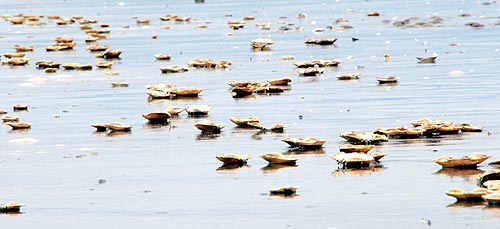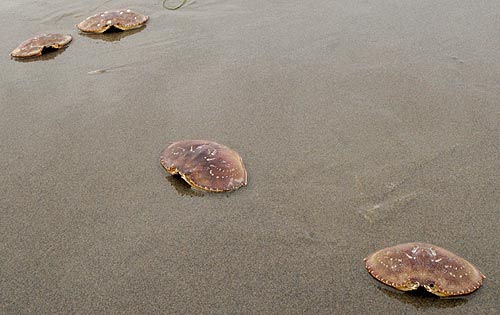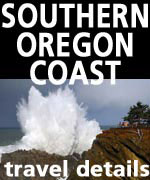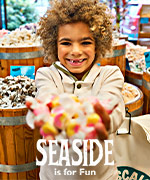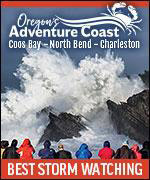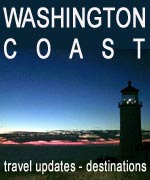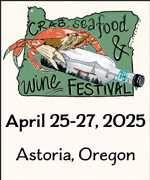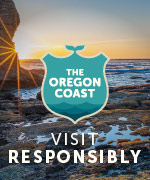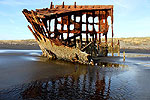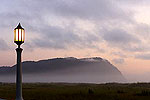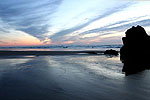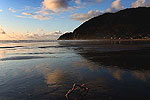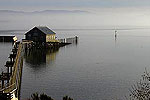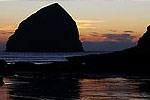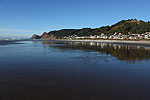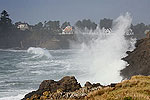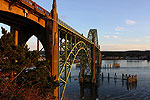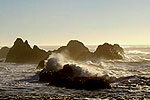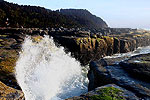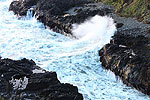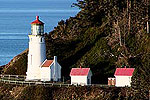Masses of Dead Crab Parts on Oregon Coast Puzzling Beachgoers
Published 08/07/2019 at 4:23 AM PDT
By Oregon Coast Beach Connection staff
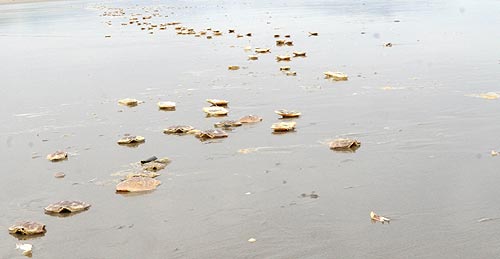
Includes exclusive listings; some specials in winter
In Cannon Beach:
Includes rentals not listed anywhere else
In Manzanita, Wheeler, Rockaway Beach:
Some specials for winter
In Pacific City, Oceanside:
Some specials for winter
In Lincoln City:
Some specials for winter
In Depoe Bay, Gleneden Beach:
Some specials for winter
In Newport:
Look for some specials
In Waldport
Some specials for winter
In Yachats, Florence
Some specials for winter
(Oregon Coast) – It looks as if there’s been a major crab feast, or maybe some apocalyptic die-off. Loads of crab shells and their parts are being found around the Oregon coast, and it’s leaving more questions than answers for many. (Photo above courtesy Seaside Aquarium).
The simple answer: it’s the massive crab molting that happens like clockwork every late summer.
Reports are coming in from all over the Oregon coast, going back at least to the last week of July. Residents of Yachats have been talking about them for the last few days.
CoastWatch volunteers have been noting them for about three weeks: one of the earliest sightings around the Peter Iredale, where they were apparently already fairly old and bleached. Other areas talked about include the Clatsop Spit at Fort Stevens, Strawberry Hill area between Yachats and Florence, the Siuslaw South Jetty Road at Florence, and apparently almost all of Lincoln County from Yachats to Lincoln City.
This also happens in spring. Right now it’s the males shedding their crab shells; in the spring it’s the females. When it happens, it occurs in great numbers, as all the crabs molt at the same time.
It’s not just any crab: it’s the yummy Dungeness crab.
But before you get to drooling over the possibility of a free dinner off the beach, you won’t find them with their meat intact. This is just the shells and exoskeleton parts.
Science calls it crab exuvia, and it’s startling to many, according to Oregon Department of Fish and Wildlife (ODFW).
“It can look like a major disaster occurred to the crab population, but it’s as natural as kids outgrowing their old shoes,” ODFW said.
There’s a big difference between an actual dead crab and shells from the molting process. You have to look carefully at the piles of crab going up the beach, and then check the area of its body called the molt line.
ODFW’s descriptions of this sound like a monster movie: crabs will lose large chunks of their bodies. Antennae, old gills, chunks of legs and even parts of the mouth fall off. This is what’s called a “whole exuvia.”
Ocean currents simply wash the bits ashore.
“Every detail is there except the crab,” ODFW said. “In summer months, when Dungeness crab molting activity peaks, ODFW usually receives calls reporting 'many dead crab on the beach' which are almost always these molts.”
Tiffany Boothe, with Seaside Aquarium, said people may think this doesn’t explain the legs washing ashore – but it does. Those exoskeletons come off as well.
“If you break open the legs and it’s empty, it’s a molt,” Boothe said. “If you break it open and there’s meat in there, it’s a dead crab.”
The hitch that’s occurring right now is that the Oregon coast is experiencing some upwellings, which brings stuff off the ocean floor into the water columns, and then onto beaches. That coupled with the dead zones off the central and southern Oregon coast could mean a few masses of dead crabs as well.
When crabs start their molting process, the old exterior – the exoskeleton – starts to loosen from the new one that’s been growing underneath. The new one starts absorbing water and gets bigger, thicker. This, in turn, creates a split and makes the molt line, and the crab slowly starts wiggling out of its old shell, squeezing itself backwards.
This softness, however, results in the crab being very vulnerable to predators. It hides in the sand for a while, waiting for the new shell to harden.
When October and November come around, the crabs have stopped their molting process and begin to fatten up. This is why December is often when crabbing yields the fattest, juiciest catches of crab.
Also found on Oregon coast beaches these days: the casings of cellophane worms. These wind up looking like little filaments or wires. There have also been a lot of Olive snails as of late too. According to Seaside Aquarium: “Olive snails burrow in the sand, leaving a plowed trail behind. While burrowing, the snail will stick its long siphon up through the sand to be used as a snorkel.”
Oregon Coast Hotels for this event - Where to eat - Map - Virtual Tour
Cannon Beach Lodging
Nehalem Bay Lodgings
Manzanita Hotels, Lodging
Three Capes Lodging
Pacific City Hotels, Lodging
Lincoln City Lodging
Depoe Bay Lodging
Newport Lodging
Waldport Lodging
Yachats Lodging
Oregon Coast Vacation Rentals
Oregon Coast Lodging Specials
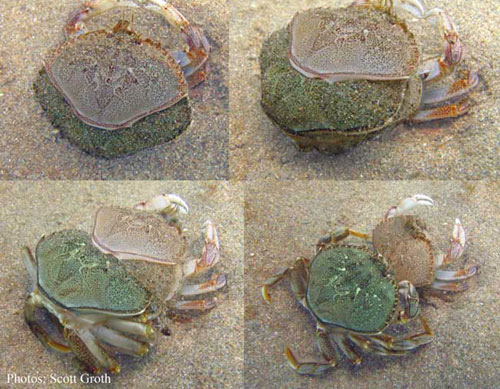
Photo above: ODFW, Scott Groth. Photos below Tiffany Boothe, Seaside Aquarium
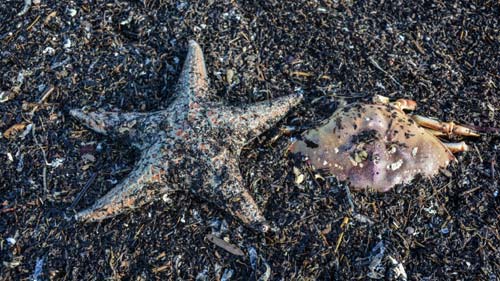
More About Oregon Coast hotels, lodging.....
More About Oregon Coast Restaurants, Dining.....
LATEST Related Oregon Coast Articles
Travel Advice: Traffic Cams for I-5, I-205, I-405, Hwy 217, I-84, OR 26
Low Tide Oceanside Events Take You Deeper Into N. Oregon Coast Tidepools
June 13, 26, 27, and 28, these uncover the wonders at the water's edge. Oceanside events, Pacific City events, Tillamook events, Netarts
Military Truck Tours Back at Fort Stevens, Go Back in Time on N. Oregon Coast
Hop aboard a five-ton military truck and rove around the grounds. History. Astoria events, Warrenton
Newport Astrophotography Events Bring the Universe to Central Oregon Coast
July 25 at Frank Wade Park, August 16 at Newport Rec Center, Aug. 23 - 24 road trip. Nwport events
Lincoln City Summer Kite Fest Returns, with Nod to Oregon Coast's Famed Pixie...
June 21 - 22 at the D River State Recreation Site. Lincoln City events
Rare Lunar Event Tonight Won't Happen Again for Almost 20 Years: Oregon, Wash...
Moon at lowest on the horizon it's been in 20 years; plus 'full moon effect'. Sciences, astronomy
Bandon's Circles in the Sand Returns to S. Oregon Coast, Full Summer and Shut...
Into mid-August with parking shuttles a great assist. South coast events, Bandon events
Summer's Surprise Rate Drops in July On Oregon Coast Include Lincoln City Bea...
20 percent some vacation rentals in the heat of July's highest rates. Lincoln City lodging specials, Lincoln City hotel reviews
Back to Oregon Coast
Contact Advertise on BeachConnection.net
All Content, unless otherwise attributed, copyright BeachConnection.net Unauthorized use or publication is not permitted







